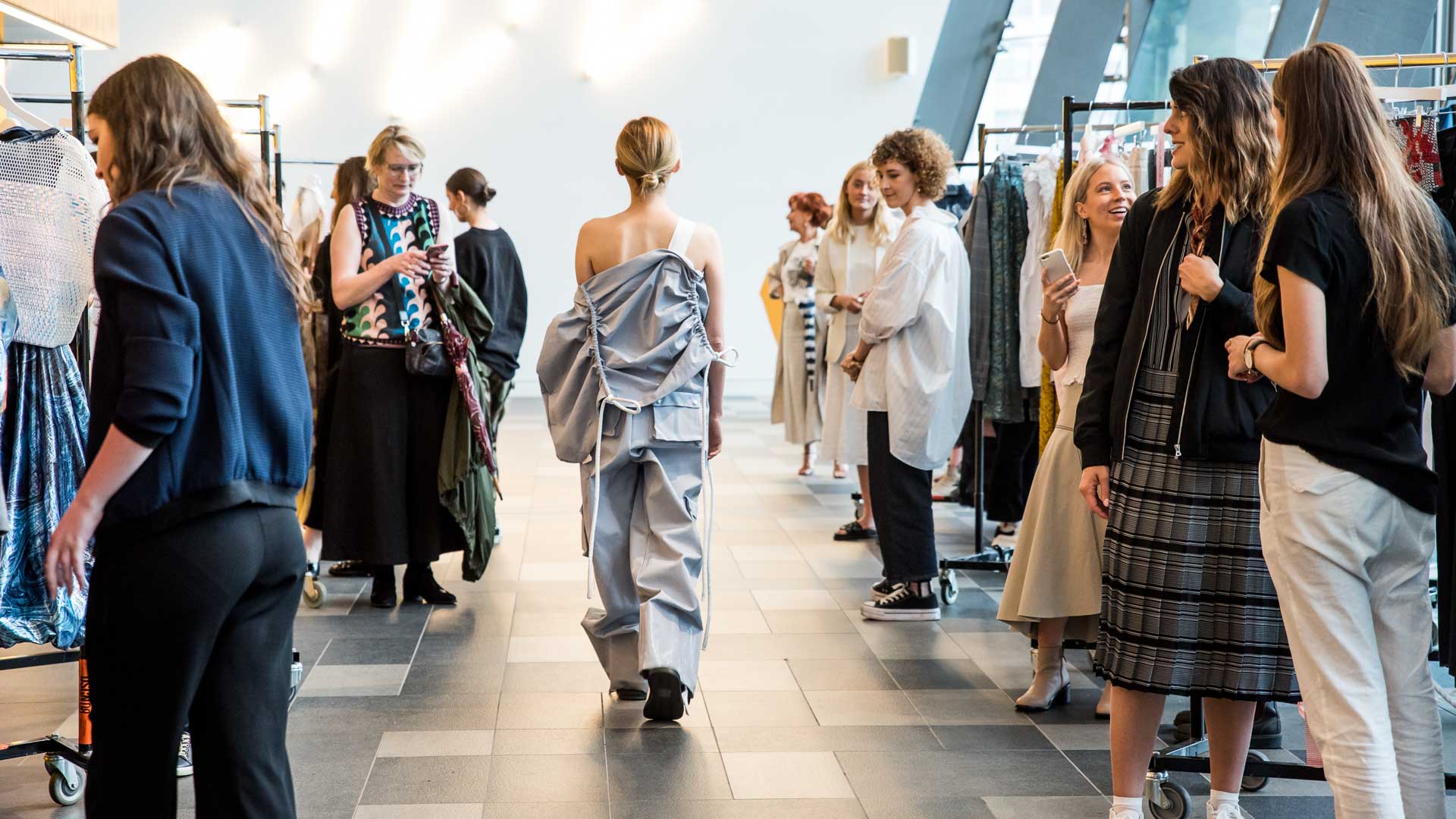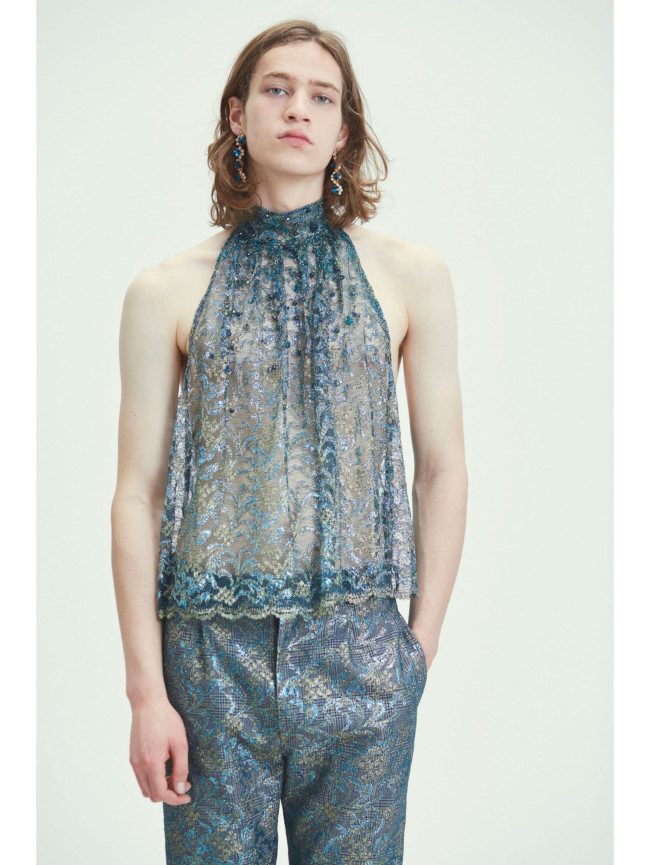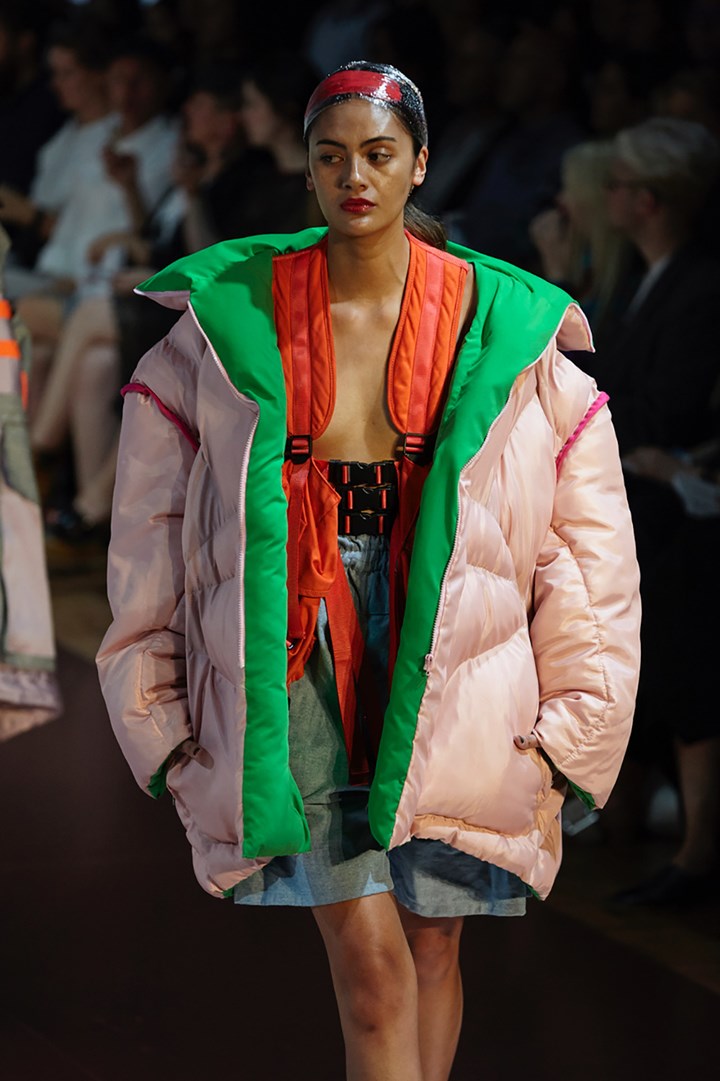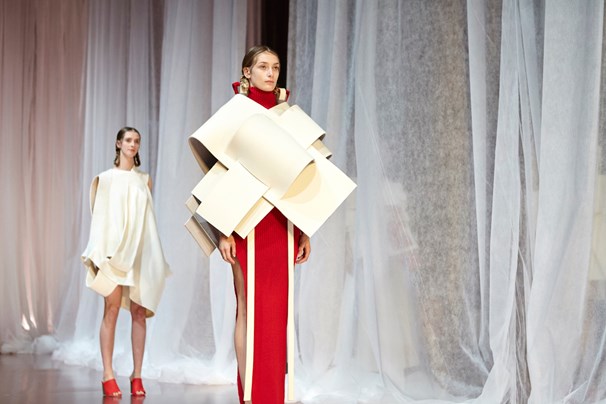Sydney’s UTS Fashion & Textiles programme has a reputation for producing Australia’s most successful global designers. The end of the year has brought with it a fresh crop of graduates with a host of bright ideas to change the future of fashion.

Every year, the UTS fashion class showcases their graduate collection before an audience of business insiders and fashion influencers. At last week’s show, Akira Isogawa (one of Australia’s most prominent contemporary fashion designers) and award-winning ex-student Kacey Devlin watched on as the class of 2017 presented a selection of their pieces.
The theme for this year: disruption. “It’s all about enabling students to think about what they’re producing in a very innovative way, and also to provoke the people who are already out there in the fashion space to think differently,” honours year co-ordinator Armando Chant explained to Marie Claire.
“The students are at the end of their degree. They already know how to design a jacket or a pant. What we want them to do is bring added value to the industry in terms of their creativity, voice, and ideas on what fashion can be.”
Provoke they did. Ideas including sustainability, redefining gender and embracing diversity popped up throughout the evening, with an overall feeling of really looking forward to a different future and doing away with outdated cultural standards. Many students were inspired by their desire to create a sustainable fashion of tomorrow and making peace with our planet.
Designers to watch out for:
Alicia Minter Hunt gave a visual voice to ‘third culture’ kids – those children who have grown up in a different country to that of their parents.
Gina Snodgross redefined the rules of gendered dressing by looking to the history of elaborate male clothing. Inspired by 17th and 18th Century court style, her male cast was dressed in a fusion of typically ‘masculine’ and ‘feminine’ fabrics. Smocked and beaded shirting, fine wool tailoring and ornate metallic lace were woven together for a decidedly more decorative male figure.

Lisa Liu also looked at the history of male dress. This time military uniforms were used as inspiration, but totally reworked in candy-bright colours and oversized volume.

Yael Frischling’s collection was less wearable, but amazingly innovatory. Her pieces were created using zero-waste cutting and geometric patternmaking techniques, inspired by Japanese architectural interlocking forms, which removes any need for sewing!

Lily Xu, a student sponsored by the Australian Wool Education Trust (AWET), reworked factory waste yarn to create her collection of knits.
It might not have been a high-fashion/big-brand show (yet) but it certainly challenged conceived norms with a refreshing freedom and no-holds-barred approach. The future looks bright!






